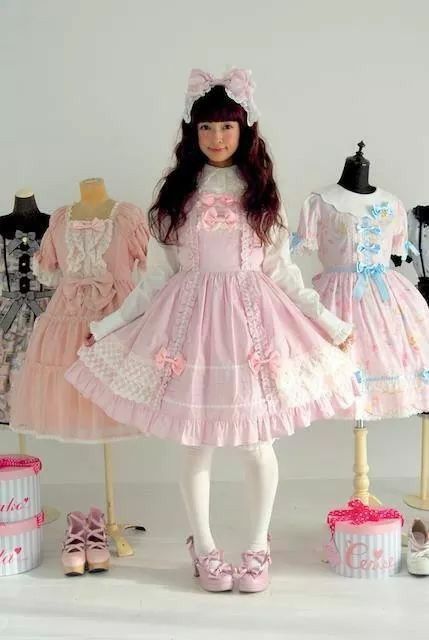
Table of Contents
Toggle1. Origins and Evolution
Lolita fashion emerged in Japan during the late 20th century as a rebellion against mainstream fashion trends. Inspired by historical European clothing, particularly the Victorian and Rococo eras, Lolita fashion combines elements of fantasy, modesty, and elegance. Over the years, it has evolved into a diverse and evolving subculture with various substyles.
2. Key Elements of Lolita Fashion
a. Dresses and Silhouettes
Lolita dresses are a central element, often featuring a bell-shaped silhouette with a fitted bodice and a voluminous skirt. The dresses come in various lengths, from knee-length to floor-length, and are adorned with lace, ribbons, and bows.
b. Modesty and Layers
Modesty is a cornerstone of Lolita fashion, with high necklines, long sleeves, and knee-length or longer skirts. Layering is common, with petticoats creating a voluminous shape, and blouses worn underneath dresses for a refined look.
c. Accessories Galore
Accessories play a crucial role in https://whitematerial-lefilm.com/. This includes oversized bows, headdresses, knee-high socks or stockings, parasols, and lace-up boots or Mary Jane shoes. These accessories contribute to the doll-like and whimsical appearance.
d. Hairstyles and Makeup
Lolita hairstyles often involve curled or straightened hair with bows or bonnets as accessories. Makeup tends to be soft and doll-like, featuring rosy cheeks and delicate eye makeup to enhance the ethereal appearance.
3. Substyles of Lolita Fashion
a. Sweet Lolita
Sweet Lolita embraces a cute and playful aesthetic with pastel colors, motifs like bows and sweets, and an overall youthful appearance.
b. Gothic Lolita
Gothic Lolita takes inspiration from gothic and dark elements, featuring darker color palettes, lace, and accessories like crosses or bats for a more mysterious vibe.
c. Classic Lolita
Classic Lolita opts for a more mature and subdued look, often featuring neutral colors, floral prints, and elegant accessories.
d. Punk Lolita
Punk Lolita incorporates elements of punk fashion, adding an edgier twist with studded accessories, plaid patterns, and bold makeup.
4. Global Influence and Community
Lolita fashion has transcended its Japanese origins, gaining popularity worldwide. Enthusiasts from different countries participate in Lolita meet-ups, conventions, and online communities to share their love for this unique style. The global Lolita community emphasizes inclusivity, creativity, and a shared passion for expressing oneself through fashion.
5. Challenges and Misconceptions
Despite its popularity, Lolita fashion has faced challenges and misconceptions. Some may misinterpret the style as a form of fetishism or associate it with anime and manga subcultures. However, Lolita enthusiasts emphasize that the fashion is a form of artistic expression and personal style.
Conclusion: A Whimsical Symphony of Style
Lolita fashion is more than just clothing; it’s a whimsical symphony of style, creativity, and self-expression. Rooted in history yet constantly evolving, Lolita fashion continues to captivate individuals around the world who embrace its unique blend of elegance, modesty, and fantasy. Whether strolling through Harajuku in Tokyo or attending international meet-ups, Lolita enthusiasts celebrate a fashion subculture that invites them to step into a dreamlike world where imagination knows no bounds.

